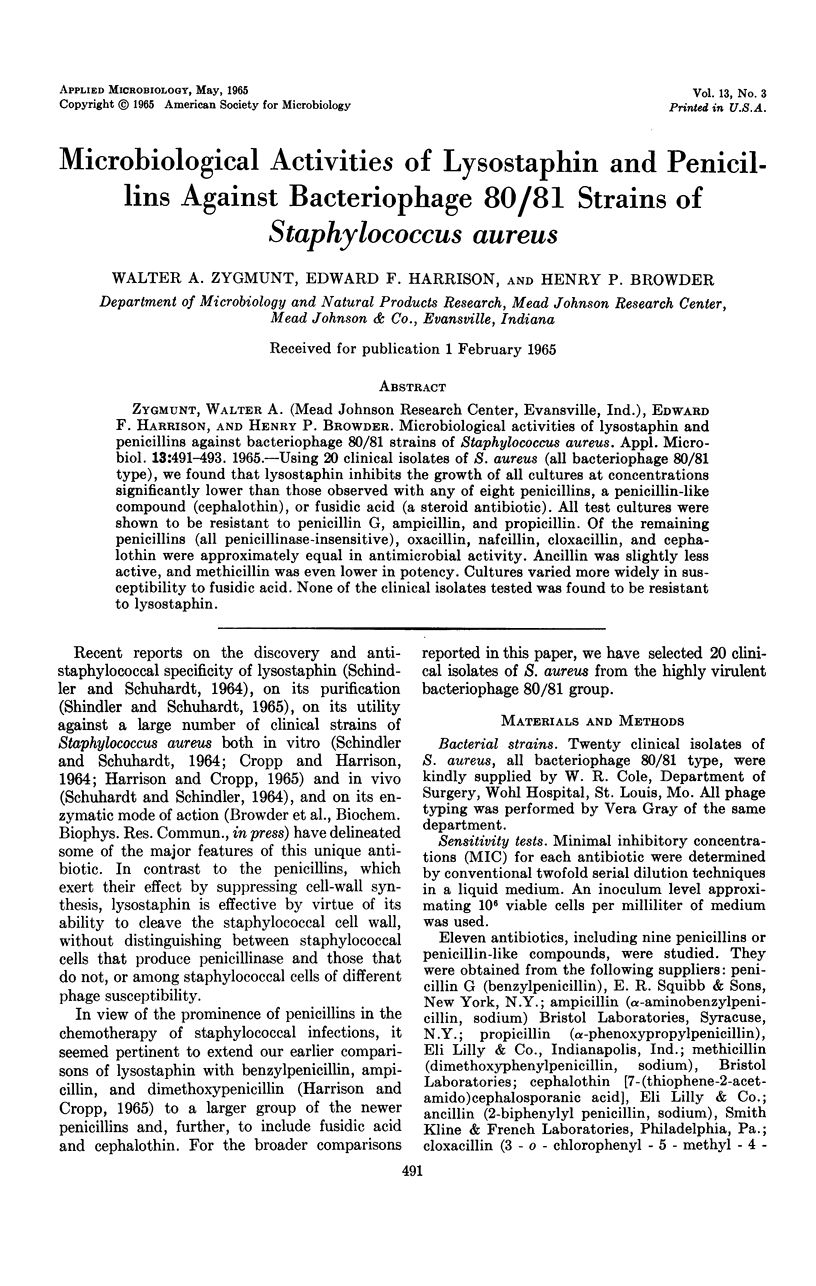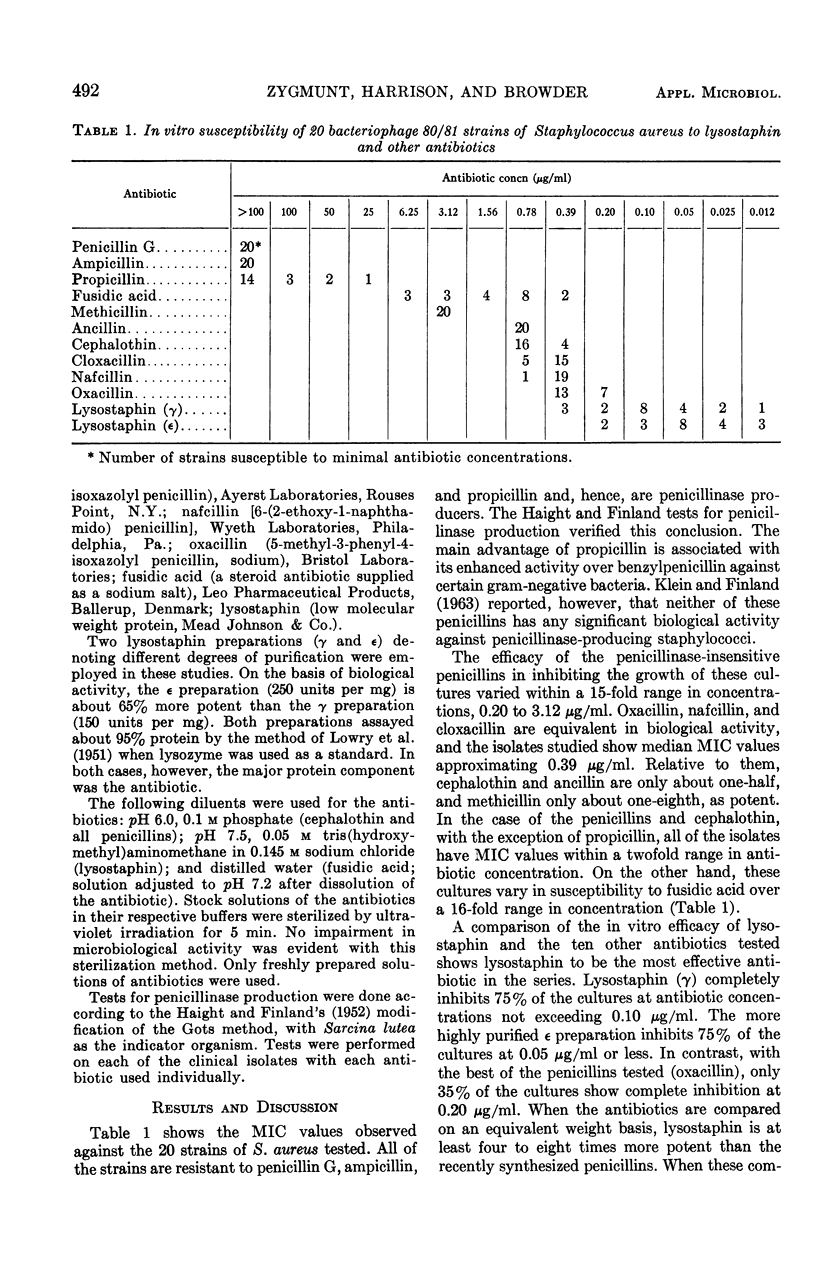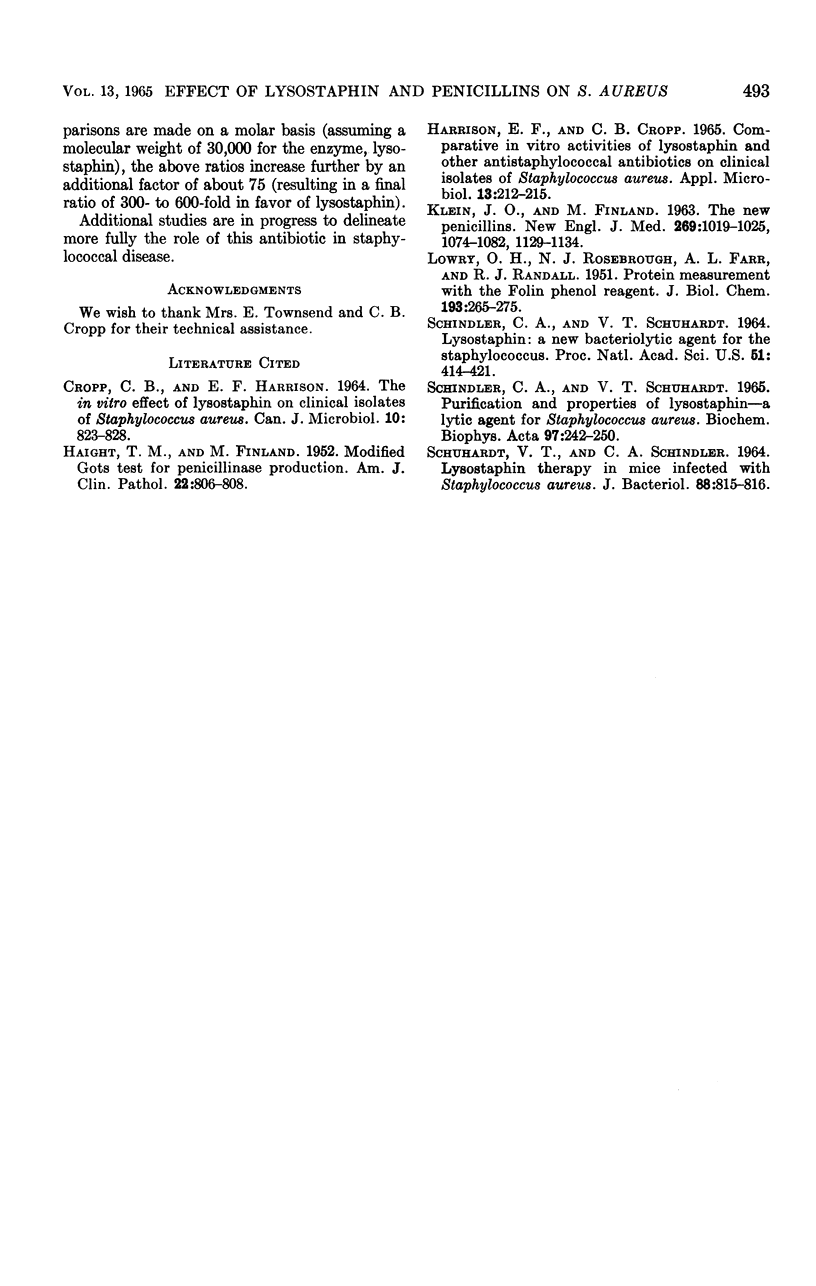Abstract
Using 20 clinical isolates of S. aureus (all bacteriophage 80/81 type), we found that lysostaphin inhibits the growth of all cultures at concentrations significantly lower than those observed with any of eight penicillins, a penicillin-like compound (cephalothin), or fusidic acid (a steroid antibiotic). All test cultures were shown to be resistant to penicillin G, ampicillin, and propicillin. Of the remaining penicillins (all penicillinase-insensitive), oxacillin, nafcillin, cloxacillin, and cephalothin were approximately equal in antimicrobial activity. Ancillin was slightly less active, and methicillin was even lower in potency. Cultures varied more widely in susceptibility to fusidic acid. None of the clinical isolates tested was found to be resistant to lysostaphin.
Full text
PDF


Selected References
These references are in PubMed. This may not be the complete list of references from this article.
- CROPP C. B., HARRISON E. F. THE IN VITRO EFFECT OF LYSOSTAPHIN ON CLINICAL ISOLATES OF STAPHYLOCOCCUS AUREUS. Can J Microbiol. 1964 Dec;10:823–828. doi: 10.1139/m64-107. [DOI] [PubMed] [Google Scholar]
- HAIGHT T. H., FINLAND M. Modified Gots test for penicillinase production. Am J Clin Pathol. 1952 Aug;22(8):806–808. doi: 10.1093/ajcp/22.8_ts.806. [DOI] [PubMed] [Google Scholar]
- HARRISON E. F., CROPP C. B. COMPARATIVE IN VITRO ACTIVITIES OF LYSOSTAPHIN AND OTHER ANTISTAPHYLOCOCCAL ANTIBIOTICS ON CLINICAL ISOLATES OF STAPHYLOCOCCUS AUREUS. Appl Microbiol. 1965 Mar;13:212–215. doi: 10.1128/am.13.2.212-215.1965. [DOI] [PMC free article] [PubMed] [Google Scholar]
- KLEIN J. O., FINLAND M. THE NEW PENICILLINS. N Engl J Med. 1963 Nov 14;269:1074–CONTD. doi: 10.1056/NEJM196311142692006. [DOI] [PubMed] [Google Scholar]
- LOWRY O. H., ROSEBROUGH N. J., FARR A. L., RANDALL R. J. Protein measurement with the Folin phenol reagent. J Biol Chem. 1951 Nov;193(1):265–275. [PubMed] [Google Scholar]
- SCHINDLER C. A., SCHUHARDT V. T. LYSOSTAPHIN: A NEW BACTERIOLYTIC AGENT FOR THE STAPHYLOCOCCUS. Proc Natl Acad Sci U S A. 1964 Mar;51:414–421. doi: 10.1073/pnas.51.3.414. [DOI] [PMC free article] [PubMed] [Google Scholar]
- SCHINDLER C. A., SCHUHARDT V. T. PURIFICATION AND PROPERTIES OF LYSOSTAPHIN--A LYTIC AGENT FOR STAPHYLOCOCCUS AUREUS. Biochim Biophys Acta. 1965 Feb 15;97:242–250. doi: 10.1016/0304-4165(65)90088-7. [DOI] [PubMed] [Google Scholar]
- SCHUHARDT V. T., SCHINDLER C. A. LYSOSTAPHIN THERAPY IN MICE INFECTED WITH STAPHYLOCOCCUS AUREUS. J Bacteriol. 1964 Sep;88:815–816. doi: 10.1128/jb.88.3.815-816.1964. [DOI] [PMC free article] [PubMed] [Google Scholar]


